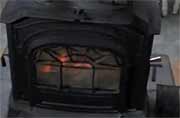
MONDAY, May 16 (HealthDay News) — A chemical in smoke from cigarettes, forest fires and cooking/heating fires may pose a health risk, a new study indicates.
Researchers designed a custom mass spectrometer to look at levels of the chemical, isocyanic acid, in the atmosphere. Until now, it was difficult to detect the chemical with conventional measurement techniques, explained the U.S. National Oceanic and Atmospheric Administration (NOAA) scientists and their colleagues.
They tested and found isocyanic acid in the air in urban Los Angeles; in the air in Boulder, Colo. downwind of a 2010 wildfire; in laboratory burning experiments at high concentrations; and in cigarette smoke.
They also found that isocyanic acid dissolves readily in water, which means people can experience direct exposure to the chemical if it gets in their eyes or lungs.
The study appears in this week’s issue of the Proceedings of the National Academy of Sciences.
The health effects of isocyanic acid aren’t fully known. In the body, isocyanic acid is part of a chemical pathway associated with cataracts and inflammation that can lead to cardiovascular disease and rheumatoid arthritis, the researchers noted.
“There are literally billions of people in the world who burn biomass for cooking and heating,” study author Jim Roberts, a chemist with NOAA’s Earth System Research Laboratory in Boulder, said in an administration news release.
“If these indoor fires release similar levels of isocyanic acid as the fires we studied in the laboratory, families could be exposed to high levels of the chemical,” he added.
More information
The U.S. Environmental Protection Agency has more about smoke from agricultural and forest fires.

